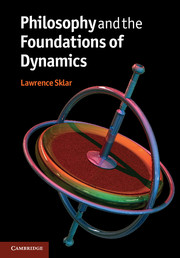Book contents
- Frontmatter
- Contents
- Chapter 1 Introduction
- Chapter 2 The pre-history of classical dynamics
- Chapter 3 The astronomical revolution
- Chapter 4 Precursors to Newtonian dynamics
- Chapter 5 The Newtonian synthesis
- Chapter 6 Philosophical aspects of the Newtonian synthesis
- Chapter 7 The history of statics
- Chapter 8 The development of dynamics after Newton
- Chapter 9 The “Newtonian” approach after Newton
- Chapter 10 From virtual work to Lagrange's equation
- Chapter 11 Extremal principles
- Chapter 12 Some philosophical reflections on explanation and theory
- Chapter 13 Conservation principles
- Chapter 14 Hamilton's equations
- Chapter 15 Canonical transformations, optical analogies and algebraic structures
- Chapter 16 The search for new foundations
- Chapter 17 New directions in the applications of dynamics
- Chapter 18 Spacetime formulations of Newtonian dynamics
- Chapter 19 Formalization: mass and force
- Chapter 20 Relationist dynamics
- Chapter 21 Modes of explanation
- Chapter 22 Retrospective and conclusions
- References
- Index
Chapter 11 - Extremal principles
Published online by Cambridge University Press: 05 December 2012
- Frontmatter
- Contents
- Chapter 1 Introduction
- Chapter 2 The pre-history of classical dynamics
- Chapter 3 The astronomical revolution
- Chapter 4 Precursors to Newtonian dynamics
- Chapter 5 The Newtonian synthesis
- Chapter 6 Philosophical aspects of the Newtonian synthesis
- Chapter 7 The history of statics
- Chapter 8 The development of dynamics after Newton
- Chapter 9 The “Newtonian” approach after Newton
- Chapter 10 From virtual work to Lagrange's equation
- Chapter 11 Extremal principles
- Chapter 12 Some philosophical reflections on explanation and theory
- Chapter 13 Conservation principles
- Chapter 14 Hamilton's equations
- Chapter 15 Canonical transformations, optical analogies and algebraic structures
- Chapter 16 The search for new foundations
- Chapter 17 New directions in the applications of dynamics
- Chapter 18 Spacetime formulations of Newtonian dynamics
- Chapter 19 Formalization: mass and force
- Chapter 20 Relationist dynamics
- Chapter 21 Modes of explanation
- Chapter 22 Retrospective and conclusions
- References
- Index
Summary
From least time to least action
The third developmental stream of dynamics that came to fruition in the eighteenth century is quite unlike the first two streams in significant ways. It did not arise out of repeated attempts at solving particular difficult special cases of dynamical problems. Nor, when it was discovered, was its primary importance its ability to provide new methods for solving such problems. Its importance for the discipline was, rather, more of a “theoretical” kind, providing new and deep insights into the fundamental structure of the theory. Whereas the other two streams of development carried with them philosophical issues already present in the standard controversies over the mode of explanation in dynamics familiar to Newton and his critics, this third developmental stream opened up entirely new controversial issues concerning what could count as a legitimate explanation in science. It was also curious that these developments in dynamics had their origins not in contemplation of mechanical issues, but, rather, in explanatory accounts offered in the theory of light, in optics, dating back to ancient Greece.
The Greek mathematicians had become aware of “minimization” problems quite early. For example, it was well known that the circle was the shortest curve bounding an area of specified size. Indeed, this is one of the “perfections” of the circle taken by Aristotle to account for the cosmic orbits. The use of a minimization principle by the ancient Greeks that eventually fed into the important role such principles play in physical explanations, though, was the proof by Hero that the law of reflection, namely the angle of incidence of the light on the surface of the mirror equaling the angle of reflection, could be derived by postulating that the distance taken by a light beam to go from a point to a point on the mirror and then to a third point of reception was least when the mirror point was such that the distance traveled by the light along the path was less than that which would be traveled for any other point on the mirror taken as intermediary. The proof is from plane geometry and is very simple.
- Type
- Chapter
- Information
- Philosophy and the Foundations of Dynamics , pp. 102 - 109Publisher: Cambridge University PressPrint publication year: 2012



